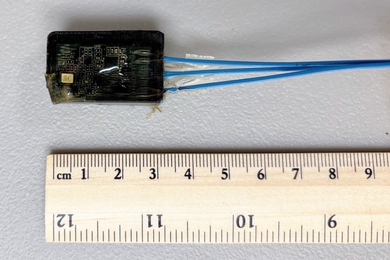Chemistry's role in bridging the gap between solar energy's limited present use and enormous future potential was the topic of a recent article by MIT Professor Daniel G. Nocera and a colleague.
In 2001, approximately 86 percent of the world's energy was obtained from fossil fuels. While fuel reserves are sufficient to support an energy demand that is expected to triple by 2100, the more immediate problem lies in stabilizing excess atmospheric carbon dioxide, a key contributor to global warming, by adopting more carbon neutral power.
The sun's vast energy could be an ideal power source. More energy from sunlight strikes the Earth in one hour than is consumed by the planet in one year. Yet in 2001 solar energy accounted for less than 0.1 percent of total electricity.
The major hurdle to overcome is developing a cost-effective method of storage. "We need energy when the sun doesn't shine," said Nocera, the W.M. Keck Professor of Energy and professor of chemistry.
Nocera and Nathan S. Lewis of Caltech suggest that we borrow from nature and store solar energy in the form of chemical bonds, as plants do in photosynthesis. The mechanism would involve splitting water to generate oxygen and storable fuels such as methane or other hydrocarbons.
In the October 24 issue of the Proceedings of the National Academy of Sciences, the two propose several possible reactions. They note, however, that advances in chemistry such as the development of suitable catalysts for water-splitting are crucial for solar energy to reach its full potential.
A version of this article appeared in MIT Tech Talk on December 13, 2006 (download PDF).






